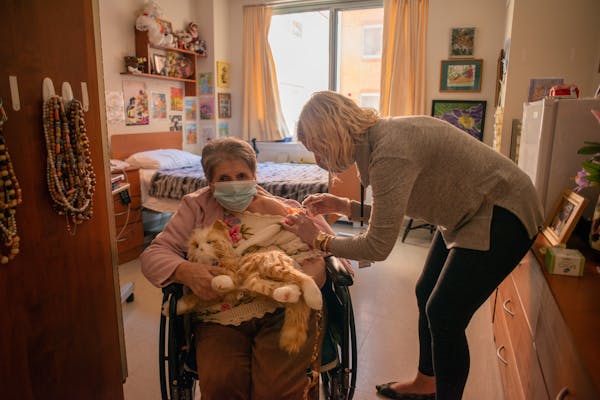Thursday was the last day of the U.S. federal public health emergency in response to the spread of COVID-19, another big step in the slow shift back to normalcy after a pandemic that exceeded three years and forced major worldwide disruptions.
The end of the federal emergency means changes for hospitals and how they interact with COVID sufferers. Here are four things expected to change:
- Many health plans will continue to fully cover COVID vaccinations, but patients are likely to lose access to free at-home COVID-19 tests while also experiencing new or increased co-pays for COVID treatment.
- Small, rural critical-access hospitals are losing flexibility around the ability to increase bed capacities and keep patients checked in for longer. Joe Schindler, a vice president at the Minnesota Hospital Association, previously said that made small hospitals more effective in treating serious illnesses with aid from video consults by specialists — thus easing a bed crunch in urban hospitals.
- Hospitals are also pushing against the reinstatement of an old rule that required Medicare patients to be admitted for at least three days before they could be transferred to nursing facilities.
- A 20% rate increase in Medicare payments for hospital treatment of COVID-19 is lifting, though Schindler said the switch won't hurt hospitals too much because the number of patients with COVID-19 has declined.
More from Star Tribune
More from Star Tribune
More from Star Tribune
More from Star Tribune
More from Star Tribune
More from Star Tribune
More from Star Tribune
More From Star Tribune
More From Local
Local
Man whose Snapchat group sold illegal 'switches' and ghost guns in Minnesota gets two years
Avont Drayton's attorney said his client 'thought of these items as really cool tools in a similar manner to buying a new power tool.'
Local

Medcalf: Exonerated of murder, author will speak at our Minneapolis book club about 'life and freedom'
Anthony Ray Hinton spent nearly 30 years on death row for a murder he didn't commit: "The only way I knew that I could get my joy back is that I had to forgive them."
West Metro
Officials reveal reason Robbinsdale shelter-in-place alert mistakenly was sent countywide
The sheriff's office said it has identified the step in the process that led to the mistake.
Politics
DFL state senator charged with first-degree burglary in break-in at stepmother's home
Sen. Nicole Mitchell's arrest could cause political complications for Democrats, who control the Minnesota Senate by a one-seat margin.
High Schools

Is the east side the best side in high school baseball? Poll has an answer.
Yes, Wayzata is No. 1 in the Star Tribune Metro Top 10. But where does the balance of power swing (or miss) in the Twin Cities and suburbs?
